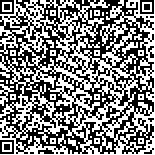| 摘要: |
| [摘要] 目的 分析108例住院患者2019新型冠状病毒(2019 Novel Coronavirus,2019-nCoV)核酸检测结果,探讨其临床意义。方法 收集2020-02-16~2020-04-16在广西壮族自治区人民医院邕武医院临时应急病房住院的108例新型冠状病毒肺炎确诊病例和疑似病例,采用荧光定量逆转录聚合酶链反应(real-time fluorescence reverse transcriptase polymerase chain reaction,RT-PCR)方法检测患者呼吸道标本(咽拭子、气管吸物、痰液)和非呼吸道标本(粪便、肛拭子、结膜拭子)的2019-nCoV核酸,分析不同临床分型新型冠状病毒肺炎患者年龄、性别构成特征和治疗后复查核酸结果,并进一步分析重型/危重型患者及婴幼儿患者治疗后不同生物学类型样本核酸结果。结果 108例住院病例中确诊患者81例,无症状感染者3例,疑似患者24例。确诊患者中轻型5例,中位年龄为26.0岁;普通型68例,中位年龄为39.0岁;重型/危重型8例,中位年龄为66.5岁。无症状感染者中位年龄为2.0岁;疑似患者中位年龄为43.5岁。重型/危重型组患者男女比例为5∶3。治疗后2周复查呼吸道样本核酸阳性率分别为轻型80.0%(4/5),普通型38.2%(26/68),重型/危重型87.5%(7/8),无症状感染者66.7%(2/3)。重型和危重型患者2019-nCoV核酸阳性持续时间均在20 d以上,治疗后多个类型样本持续阳性患者转归较差。6例婴幼儿患者治疗后咽拭子病毒核酸检测均阴性,3例患儿出现肛拭子和大便核酸检测反复阳性。结论 重型/危重型组患者年龄偏高,且男性所占比例较高。重型/危重型患者不同类型样本核酸阳性持续时间长,婴幼儿患者存在无症状感染且消化道病毒核酸阳性持续时间长。 |
| 关键词: 新型冠状病毒肺炎 病毒核酸检测 临床分型 |
| DOI:10.3969/j.issn.1674-3806.2020.05.05 |
| 分类号:R 563.1 |
| 基金项目: |
|
| Analysis of the nucleic acid detection results of 2019 Novel Coronavirus in 108 inpatients |
|
YU Xia, ZHOU Ying, YANG Wen-hui, et al.
|
|
Department of Clinical Laboratory Medcine, the People′s Hospital of Guangxi Zhuang Autonomous Region, Nanning 530021, China
|
| Abstract: |
| [Abstract] Objective To analyze the nucleic acid detection results of 2019 Novel Coronavirus(2019-nCoV) in 108 inpatients, and to explore its clinical significance. Methods A total of 108 suspected and confirmed cases of coronavirus disease 2019(COVID-19) were collected in Yongwu Hospital of the People′s Hospital of Guangxi Zhuang Autonomous Region from February 16, 2020 to April 16, 2020. Both respiratory tract samples(throat swabs, endotracheal aspiration and sputum) and non-respiratory tract samples(stool, anal swabs and conjunctival sac swabs) in all the collected patients were tested for viral nucleic acid of 2019-nCoV by real-time fluorescence reverse transcriptase polymerase chain reaction(RT-PCR). The age and gender constitutional features of the COVID-19 patients with different clinical types and the results of nucleic acid reexamination after treatment were analyzed, and the results of nucleic acid examination of different biological types in the severe/critical patients and the infants after treatment were further analyzed. Results Among the 108 inpatients, 81 were confirmed, 3 asymptomatic, and 24 suspected. Among the confirmed patients, the median age of the patients with mild type was 26.0 years; the median age of the patients with moderate type was 39.0 years, and the median age of the patients with severe/critical type was 66.5 years. The median age of the patients with asymptomatic infection was 2.0 years, and the median age of the suspected patients was 43.5 years. The ratio of male to female in the severe/critical group was 5∶3. After two weeks′ treatment, the positive rate of 2019-nCoV nucleic acid in respiratory tract samples was 80.0%(4/5) in mild type, 38.2%(26/68) in moderate type, 87.5%(7/8) in severe/critical type and 66.7%(2/3) in the patients with asymptomatic infection. The duration of positive 2019-nCoV nucleic acid result was more than 20 days in the patients with severe/critical type, and the patients with persistent positive results of the test on multiple samples had poor outcomes after treatment. The 2019-nCoV nucleic acid test of throat swabs was negative in 6 infants and young children after treatment, while the nucleic acid tests of anal swabs and stool were repeatedly positive in 3 infants and young children. Conclusion Patients in the severe/critical group are older, and the proportion of males is higher. The positive results of the 2019-nCoV nucleic acid tests of different types of samples last for a long time in the patients with severe/critical type. There are asymptomatic infections in infants and young children, and their positive results of 2019-nCoV nucleic acid tests remain longer in the digestive tract. |
| Key words: Coronavirus disease 2019(COVID-19) Viral nucleic acid detection Clinical classification |

